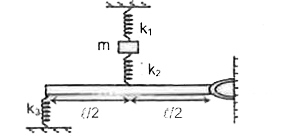Find the angular -frequncy of small oscillation of block m in the arrangement shown rod is massless. [Assume gravity to be absent]
![Find the angular -frequncy of small oscillation of block m in the arrangement shown rod is massless. [Assume gravity to be absent]](https://d10lpgp6xz60nq.cloudfront.net/physics_images/RNK_SM_FIITJEE_PHY_P3_E02_010_Q01.png)
ω=√4k1k3+k1k2+4k2k3(4k3+k2)m
Topper's Solved these Questions
- PHYSICS PART-IIIBOOK - FIITJEECHAPTER - PHYSICS PART-IIIEXERCISE - ASSIGNMENT SECTION-II MCQ (SINGLE CORRECT)
47 Videos
- PHYSICS PART-IIIBOOK - FIITJEECHAPTER - PHYSICS PART-IIIEXERCISE - MCQ (MULTIPLE CORRECT)
18 Videos
- PHYSICS PART-IIIBOOK - FIITJEECHAPTER - PHYSICS PART-IIIEXERCISE - NUMERICAL BASED QUESTIONS DECIMAL TYPE
11 Videos
- OPTICSBOOK - FIITJEECHAPTER - OPTICSEXERCISE - NUMERICAL BASED QUESTIONS
2 Videos
- PHYSICS PART2BOOK - FIITJEECHAPTER - PHYSICS PART2EXERCISE - Numerical Based Question Decimal Type
6 Videos
Similar Questions
Knowledge Check
In the arrangement shown, the pulleys and strings are massless. The acceleration of block B is :
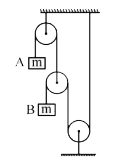 Ag/2B5g/3C2g/3D2g/5
Ag/2B5g/3C2g/3D2g/5
Find the angular frequency of small oscillation of block m in the arrangement shown. Rod is massless. (Assume gravity to be absent)

View SolutionFind the acceleration of the block of mass m in the arrangement shown in the following figures. The masses of the pulleys and the threads, as well as the friction are assumed to be negligible.
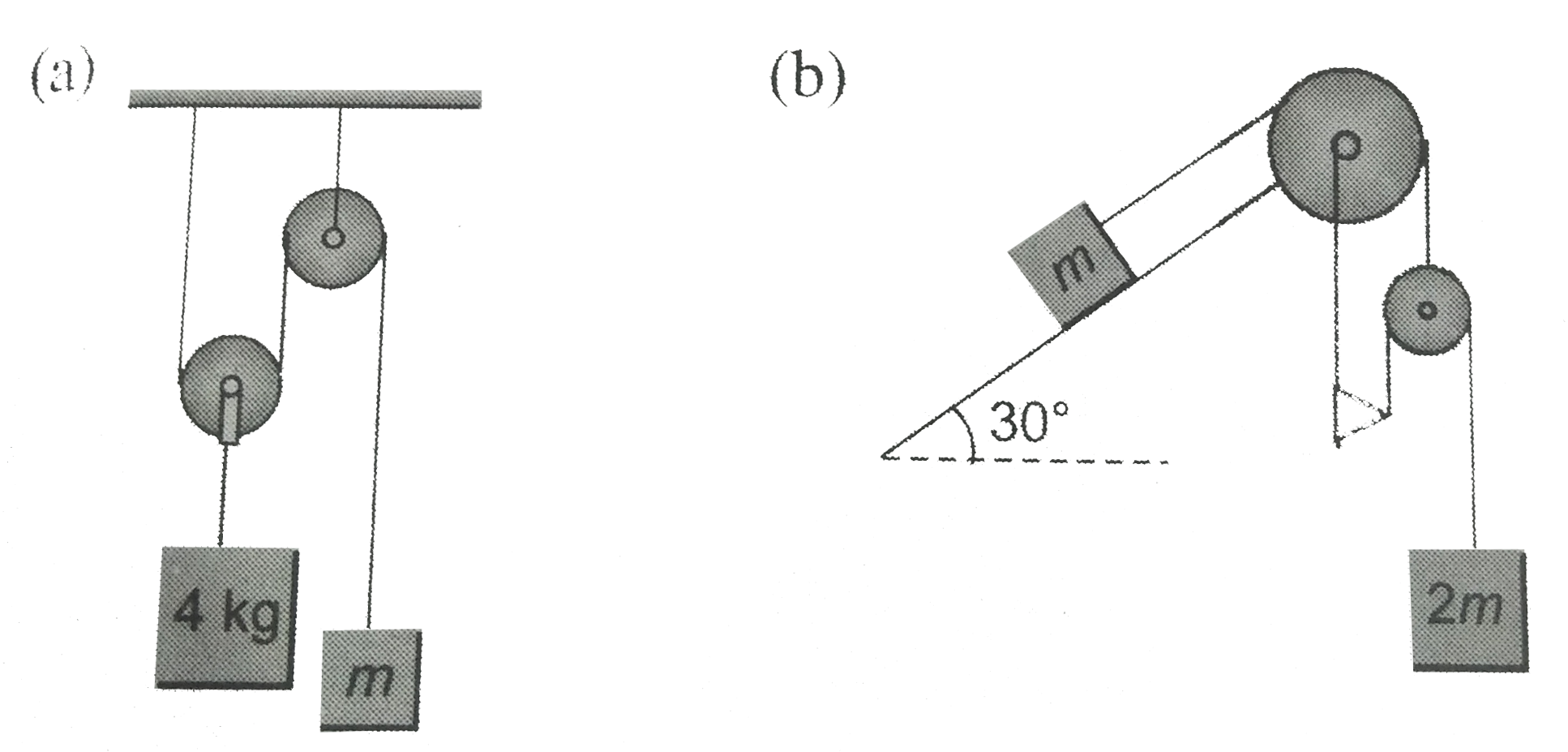
View SolutionIn the arrangement shown, the pulleys and strings are massless. The acceleration of block B is :

View SolutionA pulley-rope-mass arrangement is shown in fig. Find the acceleration of block m1 when the masses are set free to move. Assume that the pulley and the ropes are ideal.
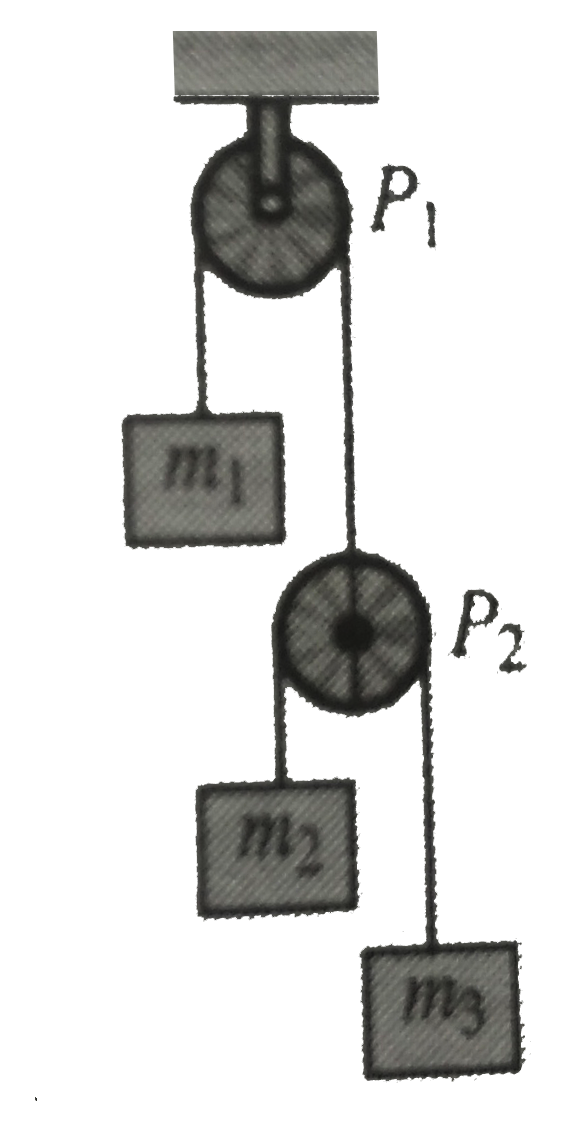
View SolutionA pulley-rope-mass arrangement is shown in fig. Find the acceleration of block m1 when the masses are set free to move. Assume that the pulley and the ropes are ideal.

View SolutionA pulley-rope-mass arrangement is shown in fig. Find the acceleration of block m1 when the masses are set free to move. Assume that the pulley and the ropes are ideal.

View SolutionTwo blocks 'A' and 'B' having masses mA and ma, respectively are connectd by an arrangement shown in the figure. Calculate the downward acceleration of the block B. Assume the pulleys to be massless. Under what condition will block A have downward acceleration?
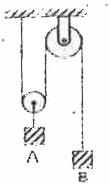
View Solution

